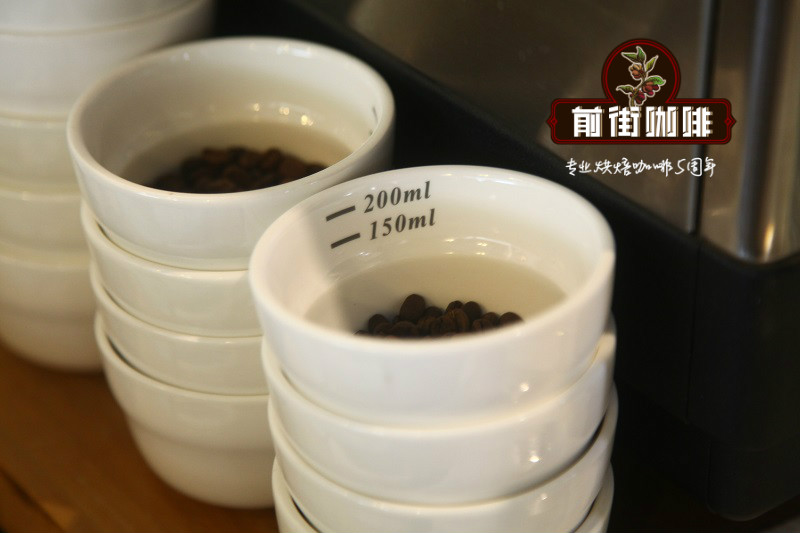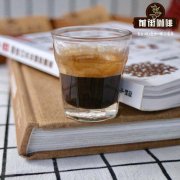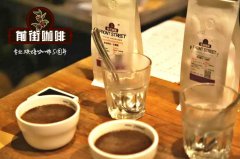How to distinguish between genuine and fake Blue Mountain Coffee beans introduction to the flavor characteristics of Jamaican coffee producing areas

Professional coffee knowledge exchange more coffee bean information please follow the coffee workshop (Wechat official account cafe_style)
When it comes to coffee, nothing is more famous than Blue Mountain Coffee. People who drink coffee or not have heard of it. Yesterday we talked about the Coffee Queen-Hawaii, the hometown of KONA. Today we take a look at the hometown of the Blue Mountains, Jamaica, the King of Coffee.
01 | planting history
In 1717 King Louis XV of France ordered coffee to be grown in Jamaica, and in the mid-1920 s, the Governor of Jamaica, Nicholas. Nicholas Lawes imported Arabica seeds from Martinique and began to plant them in St. Andrews (St.Andrew). To this day, St. Andrews is still one of the three major producers of Jamaican Blue Mountain Coffee, with the other two producing areas: Portland (Portland) and St. Thomas (St.Thomas).
In eight years, Jamaica exported more than 375 tons of pure coffee.
In 1932, coffee production reached its peak and more than 15000 tons of coffee was harvested.
In 1950, the Government of Jamaica established the Jamaica Coffee Industry Committee (the Jamaica Coffee Industry Board), which sets quality standards for Jamaican coffee and oversees the implementation of quality standards to ensure the quality of Jamaican coffee. The Commission awarded special official seals to raw and roasted coffee exported from Jamaica, which is the highest-level national coffee institution in the world.
At present, there are six kinds of marks that can represent the origin of Blue Mountain Coffee, such as Mafis River Embankment Central Factory (MBCE), Blue Mountain Coffee Cooperative Factory (MHCCT), Portland Blue Mountain Coffee Cooperative Factory (PXXSH), Coffee Industry Association (Warren Ford), Coffee Industry Association (St. John's Peak) and Lanli (JAS).
By 1969, the situation had improved because the use of Japanese loans had improved the quality of production, thus ensuring the market. By now, this kind of coffee has reached the point of being feverishly loved.
By 1981, about 1500 hectares of land in Jamaica had been reclaimed to grow coffee, followed by investment in another 6000 hectares of coffee land. In fact, today's Blue Mountain area is a small area with a planting area of only 6000 hectares, and it is impossible to grow all the coffee marked "Blue Mountain" there.
Jamaica is also the last country to transport coffee in wooden barrels. Only through this series of stringent standards set by the Jamaican Coffee Industry Authority (C. I. B) can coffee be awarded by the government and officially known as "Blue Mountain".
02 | Geographic conditions
Jamaica is an island in the Caribbean. The Blue Mountain of Jamaica is the highest mountain in the Western Caribbean (2256 meters high). The unique flavor of Blue Mountain coffee is related to the unique geographical location and climatic conditions of the Blue Mountains.
Blue Mountain is located in the coffee belt of 25 degrees north latitude, with fertile new volcanic soil, fresh air, no pollution, rainy all the year round, high humidity and large temperature difference between day and night. The soil here is rich in nitrogen and phosphorus, which is very suitable for the growth of coffee. Fertile volcanic soil, regular rainfall and under the island's hazy clouds keep it away from the hot sun. The combination of all these factors led to the Blue Mountain Coffee.
The annual harvest of Jamaican Blue Mountain Coffee is from June to November and is usually harvested manually. As the coffee trees are all grown on rugged hillsides, the picking process is so difficult that non-local skilled female workers are simply incompetent. It is very important to choose the right ripe coffee beans when picking. Immaturity or ripeness will affect the quality of the coffee.
03 | Coffee rating
There are three grades of coffee in the Blue Mountains of Jamaica: blue Mountain Coffee (Blue Mountain Coffee), Alpine Coffee (Jamaica High Mountasin Supreme Coffee Beans) and Jamaican Coffee (Jamaica Prime Coffee Beans).
Among them, Blue Mountain Coffee and Alpine Coffee are each divided into two grades. In terms of quality, the order from top to bottom is: blue Mountain 1, Blue Mountain 2, Gaoshan 1, Gaoshan 2, Jamaican Coffee.
Among them, the basic standard of blue mountain raw beans of NO.1 is beans with more than 17 mesh, defect rate less than 3%, moisture content about 13%, and so on.
Coffee grown between 457m and 1524 m above sea level is usually called Blue Mountain Coffee. Coffee grown between 274 and 457 meters above sea level is often called Jamaican coffee, and the price of blue mountain coffee is several times higher than that of alpine coffee. It is mainly distributed in 5 peaks such as John Crow,St.John's Peak,Mossman's Peak,High Peak,Blue Mountian Peak.
04 | handling method
So far, Jamaican Blue Mountain Coffee can only be washed.
The peel, pulp and mucous membrane were removed by washing and fermentation. Farms that use the washing method must build washing ponds and be able to introduce an endless supply of running water. During the treatment, first remove the peel and pulp and let it ferment for 18 hours, then put the mellow beans into the pool and pass them back and forth, using the friction of the beans and the power of running water to wash the coffee beans until smooth and clean.
After washing, the coffee beans are still wrapped in the pericarp with a moisture content of 50%, and the moisture content must be dried to reduce the moisture content to 12-14%. After that, the coffee beans are screened and stored in a special warehouse. These procedures must be strictly mastered, otherwise, the quality of coffee will be affected.
| 05 | Manor introduction |
WALLENFORD
WALLENFORD Manor is located on a hillside about 1524 meters above sea level, the main peak of Kathleen, which is in the heart of the Blue Mountains of Jamaica. WALLENFORD Manor began to grow Blue Mountain Coffee in 1790. the perennial cold and foggy climate makes the coffee fruit sweet and thick, producing extremely unique, high-quality Blue Mountain coffee beans.
Moreover, while the Jamaican government sold and privatized most of the estates, WALLENFORD ESTATE was the only remaining estate directly managed by the Jamaican government, with the most stringent quality control procedures and not excessive pursuit of commercial operation, but to maintain the reputation of Jamaican Blue Mountain Coffee.
1. Jamaica Coffee Bureau officially registered Logo for certification inspection of exported Jamaican Blue Mountain Coffee
two。 Jamaica Coffee Bureau (CIB) officially registered BLUE MOUNTAIN COFFEE? Trademark, logo authentic Jamaica Blue Mountain Coffee Outer Packaging
3.WALLENFORD COFFEE COMPANY registered trademark, logo WALLENFORD Blue Mountain Coffee outer packaging.
Mavis bank
The the Munn family family started running Mavis Bank in 1885 at a slightly higher altitude than the current site, called Strawberry Hill. Mavis bank processed coffee cherries at high altitude. the coffee beans they invested in brand-new equipment have been greatly improved because they have a really defect-free process, and the taste of this kind of coffee is very mild and smooth. Sometimes it reminds people of the fragrance of oolong tea on the frozen top of the mountain.
R.S.W Blue Mountain
R.S.W Blue Mountain Manor is located in the mountains of southeastern Jamaica. R.S.W refers to the 100% Blue Mountain Coffee produced by its Resource, Sherwood Forest and Whitfield Hall estates. The height of coffee grown in these three areas is about 700m to 1600 m. The shady clouds that often pervade the mountains are very beneficial to the growth of coffee trees, and all the harvested fruits are concentrated in the Sherwood Forest washing plant for treatment.
Clifton Mount Estate
Clifton Hill is an ancient coffee producer that is still functioning in Jamaica, and only Clifton Farm in Jamaica has a "tropical rainforest" logo.
As early as the mid-18th century (around 1750), Clifton Farm began to grow and produce coffee. The coffee planting and processing area here falls at an average of 4300 feet (1310.64 meters), with sufficient altitude, mild afternoon cloud shade, adequate sunshine and mineral-rich planting soil to provide good growth conditions for coffee plants. it also prolongs the ripening of coffee cherries.
06 | Cooking suggestion
Daily cooking filter cup choice: V60 filter cup, kalita fan and KON0 can be used.
Using KONO filter cup, parameters: 15g powder, water temperature 89 degrees, grinding 4, the ratio of water to powder is close to 1:15, the total time is about 2:00.
Technique: 25-30g water steaming, the steaming time is 30s, the first stage water injection to 120g water cut off; vertical flow, small flow slowly circle; the second stage water injection to 225g, the flow and circle speed is slightly faster, reducing powder clogging filter cup, resulting in over-extraction.
The taste is very clean, complex, very mild, chocolate sweet, very mellow. The taste is full-bodied and mellow. the sweet, sour and bitter taste of the coffee is perfect, with no bitterness at all, only a moderate and perfect sour taste and a long fruity taste.
How to distinguish between true and false Blue Mountains?
1, appearance: the raw beans of Blue Mountain Coffee are cyan, the appearance is very neat, the size is medium to small, the ends are warped up, the volume increases a lot after baking, very full.
2, grinding beans: the real blue mountain coffee beans grow at high altitude, its cytoplasmic structure is relatively loose, when grinding by hand, it feels very crisp, cool and continuous, and there is no feeling of resistance.
3, aroma: the aroma is very rich and dense; the so-called blended Blue Mountain Coffee does not have this aroma.
4, taste: the real Blue Mountain Coffee has a balanced and full-bodied taste, without any feeling of prominence or lack of taste, which is unmatched by any other coffee beans, the most critical identification point.
The real Blue Mountain and Blue Mountain flavor are two different concepts, which are generally roasted with other beans to mimic the similar taste of Blue Mountain coffee. The beans of "Blue Mountain matching" are mixed, have a big difference in shape and are easier to identify. Also do not believe in dozens of yuan a pound of "the best Blue Mountain", more than ten yuan a cup of "Blue Mountain Coffee".
Related recommendations: Jamaica Blue Mountain hand flushing suggestion, temperature, grinding degree, powder-water ratio to introduce flavor and taste description
Important Notice :
前街咖啡 FrontStreet Coffee has moved to new addredd:
FrontStreet Coffee Address: 315,Donghua East Road,GuangZhou
Tel:020 38364473
- Prev

What's good about Jamaican Blue Mountain Coffee? Why is Blue Mountain coffee so expensive?
For more information on coffee beans, please follow the coffee workshop (Wechat official account cafe_style) Blue Mountain Coffee is the most superior coffee in the world. The weather, geological structure and topography of Jamaica provide an ideal place. The ridge that runs through Jamaica extends to the eastern part of the island, with the Blue Mountains rising to more than 2100 meters. The weather is cool, foggy and raining frequently
- Next

Flavor and texture of Panamanian Rosa Coffee
For more information on coffee beans, please follow the coffee workshop (Wechat official account cafe_style) A variety of Typica exported from the Geisha Mountains in southern Ethiopia in 1931. Geisha is also known as geisha beans because it is synonymous with Japanese geisha. Several countries have tried to grow it, but it has been unknown and was transplanted to Panama in 1961. Since 2005, Pakistan
Related
- Beginners will see the "Coffee pull flower" guide!
- What is the difference between ice blog purified milk and ordinary milk coffee?
- Why is the Philippines the largest producer of crops in Liberia?
- For coffee extraction, should the fine powder be retained?
- How does extracted espresso fill pressed powder? How much strength does it take to press the powder?
- How to make jasmine cold extract coffee? Is the jasmine + latte good?
- Will this little toy really make the coffee taste better? How does Lily Drip affect coffee extraction?
- Will the action of slapping the filter cup also affect coffee extraction?
- What's the difference between powder-to-water ratio and powder-to-liquid ratio?
- What is the Ethiopian local species? What does it have to do with Heirloom native species?

